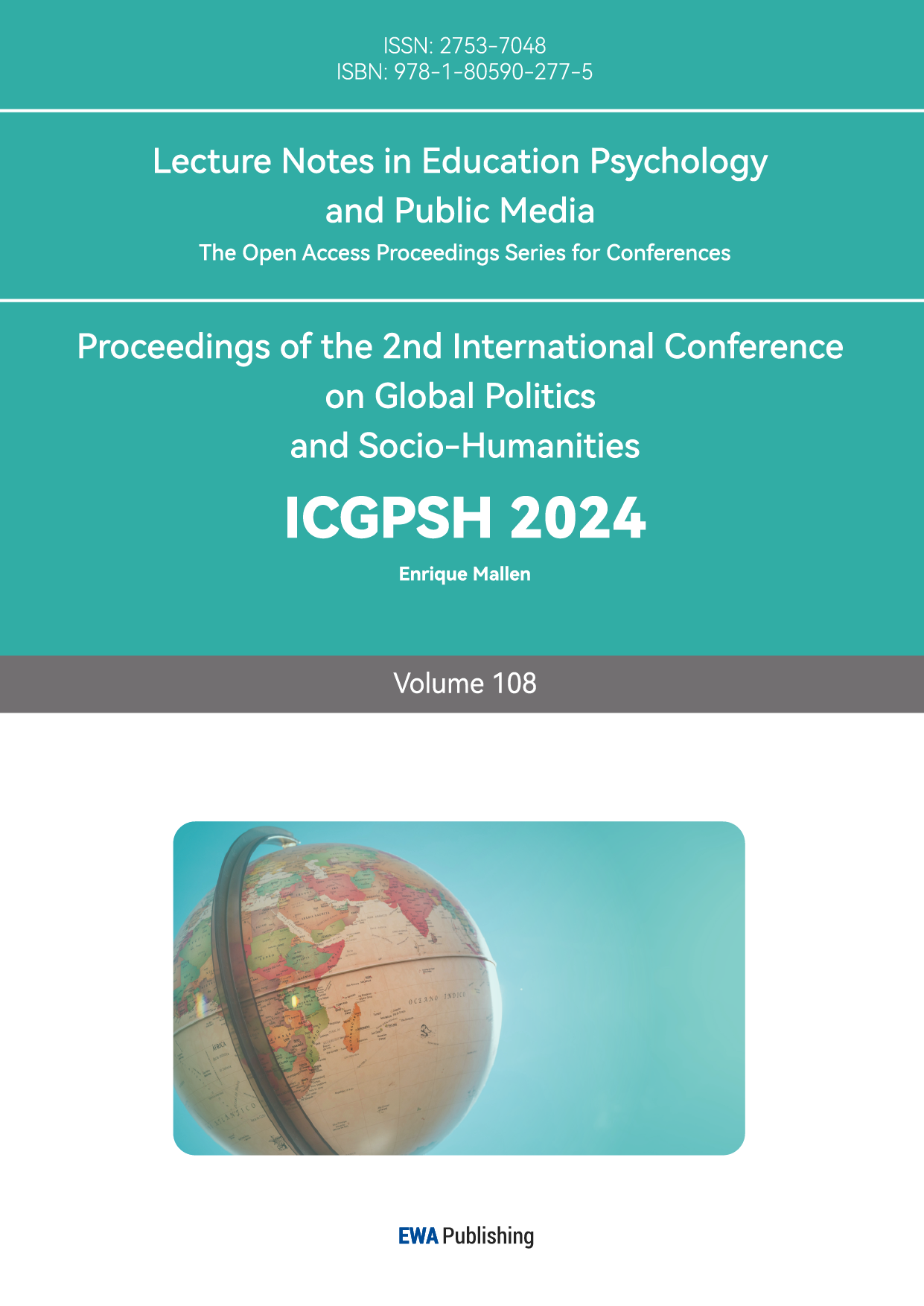References
[1]. Chung, J. H. J., & Sasani, S. (2023). Communicative Values of Online Remote Learning for English Language Classes in Higher Education Context. The Journal of Classroom Interaction, 57(1), 27-37.
[2]. Kizilcec, R. F., Pérez-Sanagustín, M., & Maldonado, J. J. (2017). Self-regulated learning strategies predict learner behavior and goal attainment in Massive Open Online Courses. Computers & Education, 104, 18–33. https: //doi.org/10.1016/j.compedu.2016.10.001
[3]. He, W., & Xiao, J. (2020). The Emergency Online Classes during COVID-19 Pandemic: A Chinese University Case Study. Asian Journal of Distance Education, 15(2), 21–36. https: //eric.ed.gov/?id=EJ1285321
[4]. Cao, Y., & Kang, M. (2018). Reform and research on teaching organization based on identity transformation. http: //qks.cqu.edu.cn/html/gdjzjycn/2018/4/20180421.htm
[5]. Pan, M. (2002). Higher education research from multi-study point of view. Journal of Higher Education, 1, 10-17.
[6]. Vygotsky, L. S. (1978). Mind in society: The development of higher psychological processes (Vol. 86). Harvard university press.
[7]. Allman, B. (2020). Socioculturalism. The Students’ Guide to Learning Design and Research, 23–31. https: //edtechbooks.org/studentguide/socioculturalism/pdf_router/print
[8]. Shabani, K., Khatib, M., & Ebadi, S. (2010). Vygotsky’s Zone of Proximal Development: Instructional Implications and Teachers’ Professional Development. English Language Teaching, 3(4), 237–248. https: //eric.ed.gov/?id=EJ1081990
[9]. Scott, S., & Palincsar, A. (2013). Sociocultural theory. In education.com. The Gale Group. https: //www.dr-hatfield.com/theorists/resources/sociocultural_theory.pdf
[10]. Pol, J. van de, & Elbers, E. (2013). Scaffolding student learning: A micro-analysis of teacher–student interaction. Learning, Culture and Social Interaction, 2(1), 32–41. https: //doi.org/10.1016/j.lcsi.2012.12.001
[11]. Robbins, J. (2005). Contexts, Collaboration, and cultural tools: A sociocultural perspective on researching children's thinking. Contemporary Issues in Early Childhood, 6(2), 140-149.
[12]. Lantolf, J. P., & Pavlenko, A. (1995). Sociocultural Theory and Second Language Acquisition. Annual Review of Applied Linguistics, 15, 108–124. https: //doi.org/10.1017/s0267190500002646
[13]. Rezaee, M. (2011). Sociocultural Theory Revisited: What are the Educational Implications? BRAIN. Broad Research in Artificial Intelligence and Neuroscience, 2(4), 62–67. https: //lumenpublishing.com/journals/index.php/brain/article/view/1899/1557
[14]. Krish , P., Maros, M., & Stapa, S. H. (2012). Sociocultural Factors And Social Presence In An Online Learning Environment. GEMA OnlineTMJournal of Language Studies, 12(1), 201-213 https: //core.ac.uk/download/pdf/11492265.pdf
[15]. Dai, Y., Lin, X., Su, S., & Li, L. (2021). The Online Learning Academic Achievement of Chinese Students during the COVID-19 Pandemic: The Role of Self-Regulated Learning and Academic Entitlement. International Journal of Psychology and Educational Studies, 8(3), 116–127. https: //dergipark.org.tr/en/pub/pes/issue/64305/976295
[16]. Guo, X. (2016). Action Research on College English Writing Based on Information Technology from the Perspective of MOOCs. English Language Teaching, 9(11), 48–52. https: //eric.ed.gov/?id=EJ1118425
[17]. Huang, J. (2020). Successes and challenges: Online teaching and learning of chemistry in higher education in China in the time of COVID-19. Journal of Chemical Education, 97(9), 2810-2814.
[18]. Lin, X., Luan, L., & Dai, Y. (2023). Exploring Chinese STEM college students’ expectations of effective online courses. International Journal of Chinese Education, 12(2). https: //doi.org/10.1177/2212585x231188977
[19]. Gauvain, M. (2001). Cultural Tools, Social Interaction and the Development of Thinking. Human Development, 44(2-3), 126–143. https: //doi.org/10.1159/000057052



